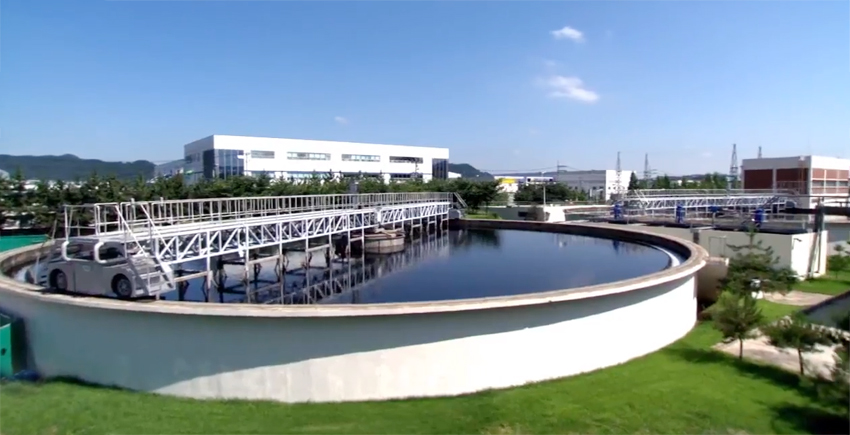Environmental Management

Since the Hansol Environmental Charter was declared in 1993, Hansol Paper has adopted environmental management systems (ISO14001 certified) across all operations to minimize our environmental impact. All of our establishments are designated by the government as Green Company and our environmental management and conservation efforts are far-reaching.
-
Green
Management
VisionBecoming a world class eco-friendly company by
making the Earth greener -
Basic Principles
Internalizing corporate social
responsibility and ethics, and ensuring
all aspects of corporate activity are harmonized with the environment. Realizing progressive environmental management through creativity and a pioneering spirit. Taking the lead in environmental conservation activities on a global scale. -
Environmental
Code of ConductAdherence to the following environmental code of
conduct shall be the top management priority for all Hansol personnel.Seek harmony between development and conservation, in all aspects of corporate activity. Expand environmentally friendly products and services to minimize the load on the Earth's environment. Take the lead in environmental conservation activities to realize environmentally friendly communities.
Climate Change
Response
Even before greenhouse emission reductions became legally mandated, Hansol Paper has been engaged in efforts to improve process efficiency, switch to better fuels, recover waste heat and adopt high-efficiency processes in order to reduce greenhouse emissions and |ower energg eosts, which account for a substantial portion of the production costs. With the adoption of the new convention on climate change following the Paris Agreement, and the strengthening of domestic and international policy and regulations related to greenhouse emission reductions (including the 2018 national greenhouse emissions reduction roadmap), Hansol Paper has further boosted its greenhouse emissions reduction efforts, making use of the newly introduced emissions trading and mitigation systems..
-
01
Energy saving and
greenhouse emissions
reduction activities
Energy savings are a most important priority, not only for Hansol Paper but for all businesses. Since its founding, Hansol Paper has been working to reduce energy consumption. In 1977, we received the President's Award for Heat Management, which was followed by the President's Citation for Energy Savings in 1984, and the Gold Tower Industrial Order of Merit for Energy Savings in 1997 Significantly, we switched to LNG as the heat source for all boilers across all of our establishments in 2011, implementing in-house monitoring systems at each plant. Through these systems, we are measuring and managing electrical power, steam and fuel usage for each unit process. Based on these energy management efforts, we registered five emissions reduction programs including paper machine steam reduction and steam generation through anaerobic wastewater treatment device under the 'Korea Voluntary Emission Reduction program' (KVER) in 2007, cutting greenhouse emissions by 47,496 tons per year. The energy saving and greenhouse emissions reduction activities have continued since, and we reduced emissions by 8,520 tons in 2016, 3,103 tons in 2017, and 4,653 tons in 2018.
-
02
Forestation and biodiversity

Hansol Paper has been planting trees since 1966. Every year, we plant approximately 1,000 trees as our contribution toward achieving carbon neutrality. In 2013, we signed an agreement with the Korean Federation for Environmental Movement and participated in forestation programs along the banks of the Han River. Approximately 3,000 trees, including willows, were planted in the Saetgang area of Yeoido to create the 'Hansol Paper Saetgang Forest'. In 2016, work began on planting the Hansol Paper Jamsil Han River Forest in Jamsil. Since our founding, we have planted approximately 45 million trees, covering approximately 14,000 hectares across the country. These trees absorb approximately 300,000 tons of carbon dioxide each year, helping to combat climate change.